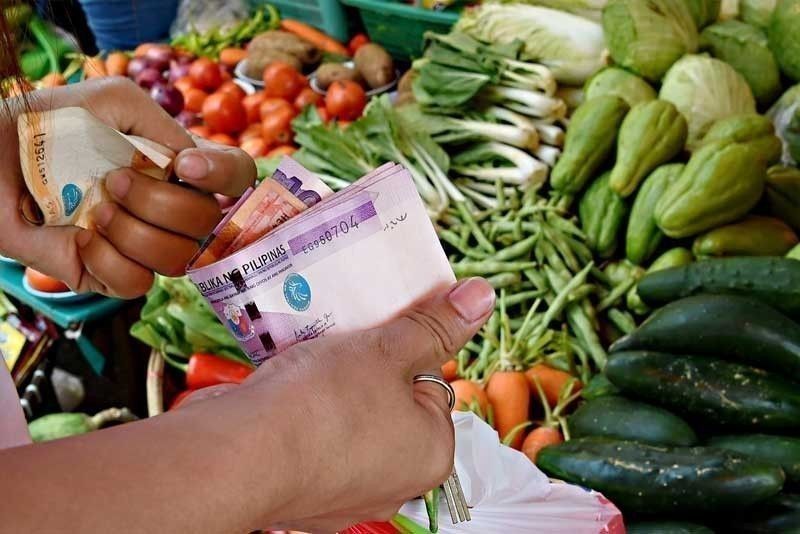Inflation falls to 40-month low of 0.9% in September

MANILA, Philippines — Consumer prices continued to ease, falling to a 40-month low in September, as the cost of the heavily weighted food, housing and utilities sectors contracted, the Philippine Statistics Authority (PSA) said yesterday.
Headline inflation, or the growth in the consumer price index, slowed down further to 0.9 percent last month from 1.7 percent in August and a peak of 6.7 percent in September 2018.
This brought the year-to-date average to 2.8 percent, which is well within the government’s 2019 inflation target of between two percent and four percent.
The September rate is the lowest since May 2016 when inflation also registered at 0.9 percent.
PSA chief Dennis Mapa noted that based on historical data, an uptick in inflation usually occurs during the holiday season, but based on the current downward trend, the prevailing expectation is for the headline rate to move sideways or continue to decelerate.
“It’s now been several months going down, our expectation is it will be sideways or continue to decelerate,” he said.
He noted, however, that the PSA is closely monitoring other commodities such as eggs, fruits and chicken which registered increases in September. Other meat prices, he noted, have been stable so far.
Contributing primarily to the downtrend in inflation during the month was the 0.9 percent decline in the heavily weighted food and non-alcoholic beverage index.
Crucial to the sustained deceleration of this index is the sustained contraction in the prices of rice (-8.9 percent in September from -5.2 percent in August), vegetables (-4.7 percent in September from -1.4 percent in August) and corn (-4.1 percent in September from -3.7 percent in August).
Fish prices also went down by 1.4 percent in September from 2.8 percent in August.
The food index alone makes up 39 percent of the headline rate for September, while rice alone makes up nine percent.
Rice inflation in September was so far the lowest for the year and marks the fifth month of contraction.
Growth in the prices of the staple peaked at 10.4 percent in September 2018 and 10.7 percent in October last year. It decelerated beginning November 2018 when supplies were boosted with the implementation of the new tariff regime for rice.
The index for housing, water and utilities and other fuels also registered slower growth of 0.8 percent in September. However, negative growth was seen in the cost of power, liquefied petroleum gas and kerosene.
The transportation index also grew slower by 0.9 percent in September as prices of petroleum and fuels for personal transport eased.
Mapa noted that the deceleration in the transport index was also partly due to base effects of the higher fuel prices last year.
The National Economic and Development Authority (NEDA) said inflation can be expected to ease further in the near term because of higher supply of rice as allowed by the rice tariffication law.
“We see the rice tariffication law continuing to help pull down overall inflation in the near term as it continues to help improve rice stock inventory of the country. This access to cheaper rice is good for Filipino consumers,” said Socioeconomic Planning Secretary and NEDA chief Ernesto Pernia.
Rice stock inventory rose by 40.3 percent in August 2019 due to higher importation of rice.
NEDA also noted that prices of retail and wholesale rice already fell by six percent to eight percent, or around P3 per kilogram, since the law took effect in March 2019.
“While consumers enjoy lower rice prices, we must at the same time protect the Filipino farmers from falling palay prices. The government must fast track and prioritize programs and projects under the Rice Competitiveness Enhancement Fund to boost production and improve profitability of the Filipino farmers,” said Pernia.
A joint resolution to help protect the farmers from falling palay prices is pending approval in Congress.
The resolution directs several government agencies and local government units to buy rice from local producers for their rice subsidy programs.
“We are also on the lookout for upside risks to inflation that may emanate from the reported cases of African swine fever in the country and volatility in international oil prices poses,” Pernia said.
- Latest
- Trending




























